Trade names Winstrol CAS ID 10418-03-8 | Pregnancycategory X Formula C21H32N2O | |
 | ||
AHFS/Drugs.com Multum Consumer Information Legal status CA: Schedule IVUS: ℞-only | ||
Stanozolol, commonly sold under the name Winstrol (oral) and Winstrol Depot (intramuscular), is a synthetic anabolic steroid derived from dihydrotestosterone. It was developed by American pharmaceutical company Winthrop Laboratories (Sterling Drug) in 1962, and has been approved by the FDA for human use.
Contents
Unlike most injectable anabolic steroids, stanozolol is not esterified and is sold as an aqueous suspension, or in oral tablet form. The drug has a high oral bioavailability, due to a C17 α-alkylation which allows the hormone to survive first-pass liver metabolism when ingested. It is because of this that stanozolol is also sold in tablet form.
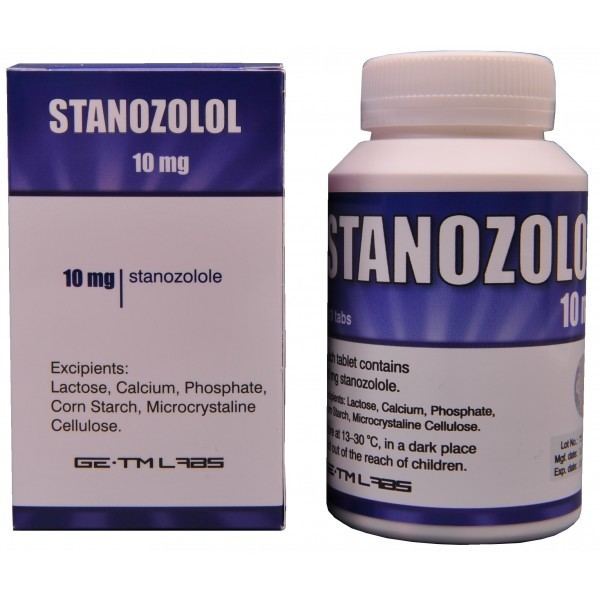
Stanozolol has been used in both animal and human patients for a number of conditions. In humans, it has been demonstrated to be successful in treating anaemia and hereditary angioedema. Veterinarians may prescribe the drug to improve muscle growth, red blood cell production, increase bone density and stimulate the appetite of debilitated or weakened animals.

Stanozolol is one of the anabolic steroids commonly used as performance-enhancing drugs and is banned from use in sports competition under the auspices of the International Association of Athletics Federations (IAAF) and many other sporting bodies. Additionally, stanozolol has been used in US horse racing.
Use in bodybuilding
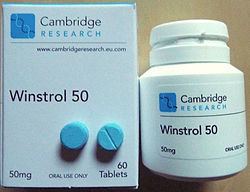
Stanozolol is subject to non-medically supervised off-label use by some athletes for its anabolic properties frequently presenting with concomitant reduction of body fat. Stanozolol is a modified derivative of dihydrotestosterone (DHT) and thus not aromatized to oestrogens via the aromatase class of enzymes (see chemical structure to right). Bodybuilders frequently misuse the term "dry" in describing their joint pain while using stanozolol either orally or via IM injection of an aqueous suspension; a reference to their perceived reason for an increase in joint pain. Rather, stanozolol as a DHT derivative can selectively compete with progesterone and other natural and synthetic progestins (nandrolone) for progestin receptors; yielding a reduction in progesterone mediated anti-inflammatory processes and presenting patients with a perception of increased joint discomfort.
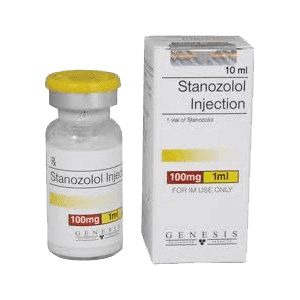
Stanozolol is used by athletes and bodybuilders to lose fat while retaining lean body mass. It is usually used in a "cutting or leaning out" cycle, to help preserve lean body mass while metabolizing adipose, although it has not been proven conclusively that it has any special fat-burning properties.
Detection of use
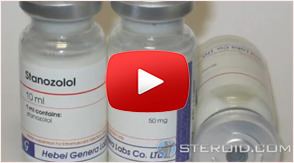
Stanozolol is subject to extensive hepatic biotransformation by a variety of enzymatic pathways. The primary metabolites are unique to stanozolol and are detectable in the urine for up to 10 days after a single 5–10 mg oral dose. Methods for detection in urine specimens usually involve gas chromatography-mass spectrometry or liquid chromatography-mass spectrometry.
History
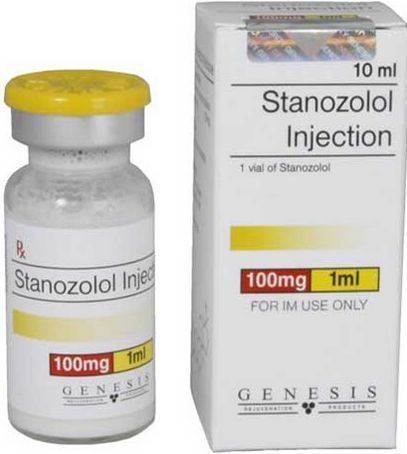
In 1962, Stanozolol was brought to market in the US by Winthrop under the tradename "Winstrol" and in Europe by Winthrop's partner, Bayer, under the name "Stromba".
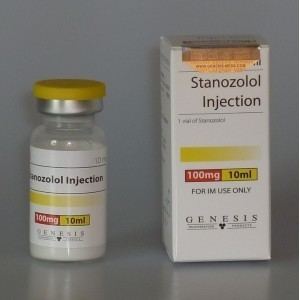
Also in 1962, the Kefauver Harris Amendment was passed, amending the Federal Food, Drug, and Cosmetic Act to require drug manufacturers to provide proof of the effectiveness of their drugs before approval. The FDA implemented its Drug Efficacy Study Implementation (DESI) program to study and regulate drugs, including stanozolol, that had been introduced prior to the amendment. The DESI program was intended to classify all pre-1962 drugs that were already on the market as effective, ineffective, or needing further study. The FDA enlisted the National Research Council of the National Academy of Sciences to evaluate publications on relevant drugs under the DESI program.
In June 1970 the FDA announced its conclusions on the effectiveness of certain anabolic steroid drugs, including stanozolol, based on the NAS/NRC reports made under DESI. The drugs were classified as probably effective as adjunctive therapy in the treatment of senile and postmenopausal osteoporosis but only as an adjunct, and in pituitary dwarfism (with a specific caveat for dwarfism, "until growth hormone is more available"), and as lacking substantial evidence of effectiveness for several other indications. Specifically, the FDA found a lack of efficacy for stanozolol as "an adjunct to promote body tissue-building processes and to reverse tissue-depleting processes in such conditions as malignant diseases and chronic nonmalignant diseases; debility in elderly patients, and other emaciating diseases; gastrointestinal disorders resulting in alterations of normal metabolism; use during pre-operative and postoperative periods in undernourished patients and poor-risk surgical cases due to traumatism; use in infants, children, and adolescents who do not reach an adequate weight; supportive treatment to help restore or maintain a favorable metabolic balance, as in postsurgical, postinfectious, and convalescent patients; of value in pre- operative patients who have lost tissue from a disease process or who have associated symptoms, such as anorexia; retention and utilization of calcium; surgical applications; gastrointestinal disease, malnourished adults, and chronic illness; pediatric nutritional problems; prostatic carcinoma; and endocrine deficiencies." The FDA gave Sterling six months to stop marketing stanozolol for the indications for which there was no evidence for efficacy, and one year to submit further data for the two indications for which it found probable efficacy.
In August and September 1970, Sterling submitted more data; the data was not sufficient but the FDA allowed the drug to be continued to be marketed, since there was an unmet need for drugs for osteoporosis and pituitary dwarfism, but Sterling was required to submit more data.
In 1980 the FDA removed the dwarfism indication from the label for stanozolol since human growth hormone drugs had come on the market, and mandated that the label for stanozolol and other steroids say: "As adjunctive therapy in senile and postmenopausal osteoporosis. Anabolic steroids are without value as primary therapy but may be of value as adjunctive therapy. Equal or greater consideration should be given to diet, calcium balance, physiotherapy, and good general health promoting measures." and gave Sterling a timeline to submit further data for other indications it wanted for the drug. Sterling submitted data to the FDA intended to support the effectiveness of Winstrol for postmenopausal osteoporosis and aplastic anemia in December, 1980 and August 1983 respectively. The FDA's Endocrinologic and Metabolic Drugs Advisory Committee considered the data submitted for osteoporosis in two meetings held 1981 and the data for aplastic anemia in 1983.
In April 1984, the FDA announced that the data was not sufficient, and withdrew the marketing authority for stanozolol for senile and postmenopausal osteoporosis and for raising hemoglobin levels in aplastic anemia.
In 1988, Sterling was acquired by Eastman Kodak for $5.1 billion and in 1994 Kodak sold the drug business of Sterling to Sanofi for $1.675 billion.
Sanofi had stanzolol manufactured in the US by Searle, which stopped making the drug in October 2002. Even with no drug in production, Sanofi sold the stanozolol business to Ovation Pharmaceuticals in 2003, along with the two other drugs. At that time, the drug had not been discontinued and was considered a treatment for hereditary angioedema. In March 2009, Lundbeck purchased Ovation
In 2010, Lundbeck withdrew stanozolol from the market in the US; as of 2014 no other company is marketing stanozolol as a pharmaceutical drug in the US but it can be obtained via a compounding pharmacy.
Pfizer had marketed stanozolol as a veterinary drug; in 2013 Pfizer spun off its veterinary business to Zoetis and in 2014 Pfizer transferred the authorizations to market injectable and tablet forms of stanozolol as a veterinary drug to Zoetis.
It is used in veterinary medicine as an adjunct in the management of wasting diseases, to stimulate the formation of red blood cells, arouse appetite, and promote weight gain, but the evidence for these uses is weak. It is used as a performance-enhancing drug in race horses. Its side effects include weight gain, water retention, and difficulty eliminating nitrogen-based waste products and it is toxic to the liver, especially in cats. Because it may promote the growth of tumors, it is contraindicated in dogs with enlarged prostates.
Stanozolol and other anabolic steroids were commonly used to treat hereditary angioedema attacks, until several drugs were brought to market specifically for treatment of that disease, the first in 2009: Cinryze, Berinert, ecallantide (Kalbitor), icatibant (Firazyr) and Ruconest. Stanozolol is still used long-term to reduce the frequency of severity of attacks.
Regulation
In the United States, like other anabolic steroids, stanozolol is classified as a controlled substance under federal regulation; they were included as Schedule III controlled substances under the Anabolic Steroids Act, which was passed as part of the Crime Control Act of 1990. In New York, the state legislature classifies anabolic steroids under DEA Schedule III.
Stanozolol and other synthetic steroids were first banned by the International Olympic Committee and the International Amateur Athletic Federation in 1974, after methods to detect them had been developed.
